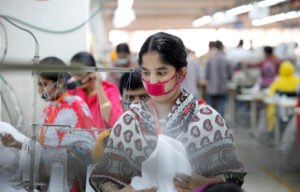
Helping the world’s poorest limits the population explosion
When wealth in a country increases, the birthrate drops. But the myth still exists that development aid leads to overpopulation.
Share
In 1970, an average of seven children were born for every woman in Bangladesh, but one in four children died before reaching five years of age. Today, three children are born per woman, and child mortality has decreased to seven percent. The explanation is that the rural population has gained access to medicine, vaccine and family planning.
The world’s population is now 7.2 billion people. According to the UN population prognosis, this number will increase to 8.1 billion people in 2015. This number will increase further to 9.6 billion in 2050 and to 10.9 billion people in 2100.
Click here to see the video where Swedish professor of international health Hans Rosling demonstrates the coincidence of child mortality and the average number of children per woman.
Other categories
Region: Global
Theme: Children & Youth, Demography & Migration, Humanitarian Aid
In 2050, there will be 9.6 billion people on the globe. This is the population prognosis from UNFPA, the UN Population Fund.
From time to time, development organisations hear the argument that the humanitarian work is contributing to overpopulate the world. But it is a myth that development aid and emergency assistance leads to overpopulation. To the contrary, helping the world’s poorest can bring down the birth rate, statistics show.
Overpopulation on the sustainability agenda
The argument about the world being overpopulated if we help the world’s poorest has most recently been raised in connection with the discussion about how we continually ensure a sustainable globe. The increasing population growth in developing countries leads to worry among both economists and climate scientists.
But the myth about overpopulation has existed for more than 2000 years and especially gained traction in 1798, when economist and demographer Thomas Malthus wrote “An Essay on the Principle of Population”, in which he described how the supply of food would no longer be able to keep up with the population. He therefore fought any state attempt to improve the conditions of the poorest people in society, since this would only lead to improving these classes’ opportunities to breed and thereby increase the nutritional problem.
Development brings down the birth rate
Malthus’ demographic theories have through the years led to strict attempts by several countries to decrease birth rates, especially in Africa, by placing limits on the numbers of children born per woman. But a more nuanced approach to the population growth is important, since populations are growing most in the countries where most people die young. This is apparent in the UN’s latest report about population growth.
The report finds that women in the 48 least developed countries give birth to 4.4 children on average, compared to the 2.5 children born per woman in developing countries in general.
As a country’s standard of living increases, and the child mortality thereby drops, women start having fewer children. This has been demonstrated several times by Hans Rosling, a Swedish professor of international health.
Councelling necessary
This connection is confirmed by Siri Teller, who is an associate professor of population growth at the University of Copenhagen, and has been working for many years at the UN Population Fund.
“One of the most important drivers of birth numbers is that people are simply afraid that the children die. Virtually no countries experience falling birth rates if the child mortality has not previously dropped”.
But this is not enough. According to Siri Tellier, women’s education plays a vital role because they start having more confidence in that they can make important decisions. She also points to the importance of family planning, an area where there is often a big difference between the richest and the poorest.
“Until recently, there have been cuts made to just that, family planning. Luckily it seems to be changing. It has again become apparent how important it is, but there’s still a long way to go”.
Same conclusion was reached by the UN in the latest status report. Every fourth woman south of Sahara has an unfulfilled need for councelling about prevention and family planning.







